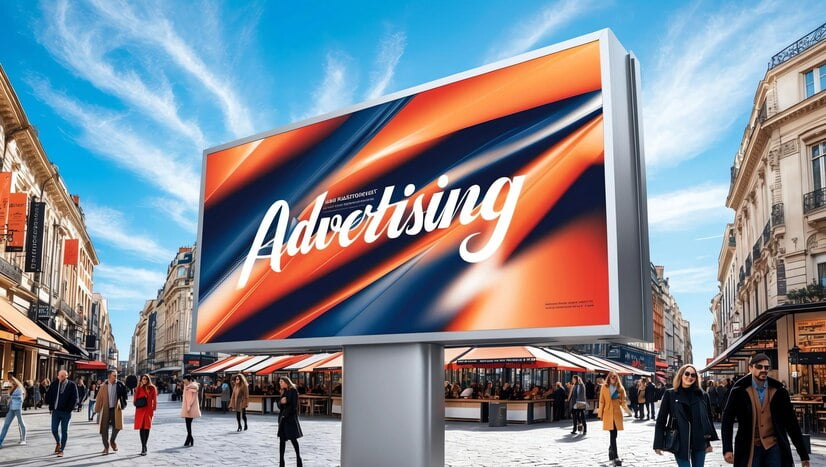Digital screens are now an essential part of modern advertisement. The dynamic, bright display easily catches the human eye and conveys the message at a glance, giving businesses an ultimate flexible platform to advertise their products and services. They are engaging brands with their audiences from city streets to retail stores, even at airports.
What Are Advertising Screen Displays?
Advertising screen displays, commonly known as digital signage, are electronic screens used to display multimedia content in the form of videos, images, animations, and text. Such installations could take the form of an LED screen, an LCD panel, or a or a projection system, among others. Many places have these types of screens: shopping malls, restaurants, transportation junctions, and even offices. This screen content can be updated in real-time from a remote location, thus enabling marketers to conduct effective and dynamic marketing campaigns with huge flexibility.
Key Benefits
- High Visibility and Engagement: Advertising screen displays are placed at strategic locations where the maximum number of people can view them. Unlike traditional static posters or banners, digital displays are dynamic and could easily catch the attention of a passing crowd with moving images, bright colors, or animations. The aspect of enhancing visibility very often leads to higher engagement as well as better recall of the advertisement.
- Targeted Advertising: Perhaps one of the best features of digital displays is targeting. The content can be changed to suit the time of day, locality, or even the demographics of the viewers. To exemplify, the retail store can have an ad message about the breakfast menu at morning time and another message at noon time about the lunch specials. So, the right set of people get the message at the right time.
- Cost-Effective and Sustainable: Although initially, setting up a digital screen may be capital intensive, in the long run, the costs will have made economic sense. There is no cost for printing, and content can be updated at no extra cost regarding physical material expenditure. This lessens the environmental burden in garbage disposal, hence a sustainable method compared to conventional forms of communication.
- Real-Time Updates and Interactivity: The main advantage of digital advertising screens is that the content can be updated on a real-time basis, allowing changes in messages to respond to particular market trends, breaking news, or events. Interactive displays, in turn, encourage user engagement with the content, making the customer experience seamless and allowing the collection of such valuable data on consumer behavior.
- Enhanced Customer Experience: By placing digital screens, not just for product advertisement but even providing information, entertainment, or interactive features to make a customer’s experience better. For example, the mall would show store directories, weather updates, or interactive maps, while in a restaurant, it would show a menu to facilitate self-service.
Types of Advertising Displays
- Indoor Digital Displays: These screens are found inside shopping malls, retail stores, and offices for indoor advertising. Normally, the purpose of the display is for promoting specific items, product information, or a brand. But again, because they are situated indoors, it only means they are relatively smaller in dimension, yet greatly interactive.
- Outdoor Digital Billboards: Large screens placed on highways, city centers, or even stadiums. They can also take all weather conditions and remain visible, even in the full sun. Outdoor displays are great for some large-scale brand awareness campaigns.
- Interactive Kiosks: Found in places such as airports, hotels, and retail stores, these screens allow users to interact with the display through touchscreens. They can provide information, help with wayfinding, or even allow customers to browse and purchase products.
- Video Walls: Video walls are multiple screens tiled together to create a large display. It is not uncommon to find them in corporate areas, events, or trade shows, particularly where something big and visual needs to be said. There are certainly creative ways to show off information and engage audiences with them.
The Future of Screen Displays
Technological advancements and a change in consumer behavior indeed make the future very bright for the advertising screen display. Using artificial intelligence and data analytics, the infusion is going to make these screens even more effective with personalized and context-aware content delivery. The screen, for example, will pick up viewer demographics on a real-time basis, thus changing the view to maximize its relevance and impact.
Meanwhile, 3D displays, AR, and VR innovations are already starting to shape the next space for digital advertising. These technologies provide new ways to captivate audiences by giving immersive experiences that go beyond the traditional form of advertising.
Conclusion
The screen display in advertising is becoming an increasingly important part of the modern marketer’s arsenal. The ability to bring out dynamic, targeted, and interactive information has made the screen display a very powerful medium for engaging consumers on the go. These screens will continue to enhance marketing strategies and contribute to customer experience with the digital evolution in place, making them good investment avenues for businesses seeking to remain at the forefront in this competitive market landscape.





